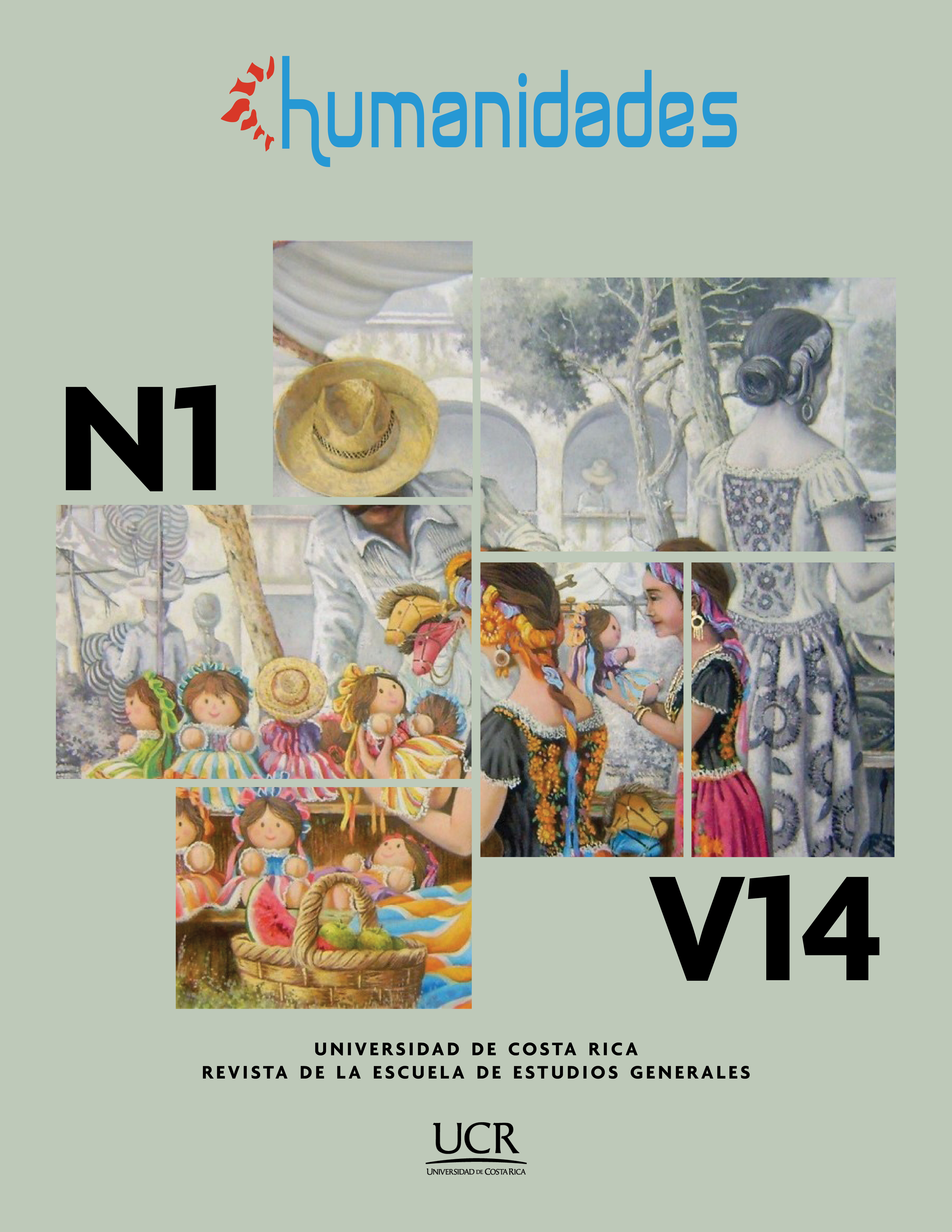Abstract
This article arises from the need to look for intellectual tools that favor understanding the different logics of inquiry that characterize the diverse areas of social and humanistic knowledge, particularly for forming academic and professional profiles in interdisciplinary fields. The objective is to argue that analogical reasoning can serve as a tool that mediates interdisciplinary dialogue. However, for this, it is necessary to recognize that only through a theoretical reading of reality is it possible to define and justify the criteria that validate the analogical comparison between different phenomena. To meet this objective, it is analyzed and exemplified how the use of analogies operates within the tradition of archaeological thought. From this, it is observed that, even within the same disciplinary tradition, a theoretical plurality is used to account for the complexity and multiplicity of dimensions that are interwoven in human and social phenomena. Therefore, it is suggested that, in the case of interdisciplinarity, only an open attitude towards theoretical plurality will enable these tools (analogies) to help discover the multiple dimensions interwoven in human complexity.
References
Bate, L. F. (1986). El modo de producción cazador-recolector o la economía del "salvajismo". Boletín de Antropología Americana, (13), 5-31.
Bate, L. F., Terrazas, A. y Acosta, G. (2015). Las arqueologías evolucionistas y el terror a la diversidad teórica. Revista Atlántica-Mediterránea de Prehistoria y Arqueología Social, 16(1), 43-69. https://revistas.uca.es/index.php/rampas/article/view/2235
Beuchot, M. (1998). Abducción y analogía. Analogía Filosófica, 12(1), 57-68. https://www.unav.es/gep/AN/Beuchot.html
Beuchot, M. (2000). Tratado de hermenéutica analógica. Hacia un nuevo modelo de interpretación. UNAM-Itaca.
Beuchot, M. (2011). La hermenéutica analógica en la interdisciplinariedad de las ciencias humanas. Franciscanum, LIII(155), 127-144. https://www.redalyc.org/pdf/3435/343529075006.pdf
Binford, L. (1967). Smudge pits and hide smoking: the use of analogy in archaeological reasoning. American Antiquity, 31(1), 1-12. https://doi.org/10.2307/278774
Binford, L. (2004). En busca del pasado. Descifrando el registro arqueológico. Crítica.
Bunge, M. (1973). Analogy, simulation, representation. En M. Bunge (Ed.), Method, Model and Matter (pp. 114-130). D. Reidel Publishing Company.
Dewey, J. (2007). Cómo pensamos. La relación entre pensamiento reflexivo y proceso educativo. Paidós.
Feyerabend, P. (1986). Tratado contra el método. Tecnos.
Frodeman, R. (2014). Sustainable Knowledge. A Theory of Interdisciplinarity. Palgrave Pivot.
Gándara, M. (1990). La analogía etnográfica como heurística: lógica muestreal, dominios ontológicos e historicidad. En Y. Sugiura y M. C. Serra, Etnoarqueología. Coloquio Bosch-Gimpera (pp. 43-82). Universidad Nacional Autónoma de México.
Gándara, M. (2006). La inferencia por analogía: más allá de la analogía etnográfica. En Consejo Superior de Investigaciones Científicas (Eds.), Etnoarqueología de la Prehistoria: más allá de la analogía (pp. 13-23). Departament d Arqueologia i Antropologia, Institució Milà i Fontanals y Consejo Superior de Investigaciones Científicas.
García, R. (2006). Sistemas complejos. Conceptos, métodos y fundamentación epistemológica de la investigación interdisciplinaria. Gédisa.
García Bravo, M. H. (2021). El horizonte interdisciplinario, una apuesta disidente. Utopía y Praxis Latinoamericana, 26(94), 15-34. https://www.redalyc.org/articulo.oa?id=27968018001
Guitián Ayneto, C. (1999). Disciplinariedad, transdisciplinariedad e integración en el currículum: aportaciones desde la didáctica de las ciencias sociales. La geografía. En T. García (Ed.), Un currículum de ciencias sociales para el siglo XXI (pp. 69-75). Díada.
Hesse, M. (1966). Models and Analogies in Science. University of Notre Dame Press.
Klein, J. T. (2010). A taxonomy of interdisciplinarity. En R. Frodeman, J. T. Klein y C. Mitcham (Eds.), The Oxford Handbook of Interdisciplinarity (pp. 15-30). Oxford University Press.
Marrero Galván, J. J. y González Pérez, P. (2023). Investigaciones sobre el uso de analogías en el aula de ciencias: una revisión sistemática. Revista Eureka sobre Enseñanza y Divulgación de las Ciencias, 20(1), 1101-1121. https://doi.org/10.25267/Rev_Eureka_ensen_divulg_cienc.2023.v20.i1.1101
Mediateca Instituto Nacional de Antropología e Historia. (2016). Huehuetéotl de piedra [Fotografía]. Museo de Sitio de Cuicuilco. https://lugares.inah.gob.mx/es/museos-inah/exposiciones/10243-1481-huehuet%C3%A9otl-de-piedra.html?lugar_id=1698
Moore, B. N. y Parker, R. (2012). Critical thinking (10th edition). McGraw-Hill.
Oliva, J. M., Jiménez-Tenorio, N. y Aragón-Núñez, L. (2016). Analogías, intuición y pensamiento creativo en la ciencia y en la educación científica. Ciencia y Educación, 3. https://sites.google.com/site/cienciayeducacionweb/ciencia-y-educaci%C3%B3n/revista-ciencia-y-educaci%C3%B3n/n%C3%BAmero-3/analog%C3%ADas-intuici%C3%B3n-y-pensamiento-creativo-en-la-ciencia-y-en-la-educaci%C3%B3n-cient%C3%ADfica
Popper, K. (1962). La lógica de la investigación científica. Tecnos.
Repko, A. F. (2007). Integrating interdisciplinarity: How the theories of common ground and cognitive interdisciplinarity are informing the debate of interdisciplinarian integration. Issues in Integrative Studies, (25), 1-31. https://interdisciplinarystudies.org/docs/Vol25_2007/03_Vol_25_pp_1_31.pdf
Salmon, M. H. (1982). Philosophy and Archaeology. Academic Press.
Schmidt, A. (2014). Analogy in archaeological theory. En C. Smith (Ed.), Encyclopedia of Global Archaeology (pp. 205-209). Springer.
Schiffer, M. B. (1990). Contexto arqueológico y contexto sistémico. Boletín de Antropología Americana, (22), 81-92. https://arqueologiageneralunca.files.wordpress.com/2016/04/schiffer-contexto-arqueolc3b3gico-y-contexto-sistc3a9mico.pdf
Szostak, R. (2015). Extensional definition of interdisciplinarity. Issues in Interdisciplinary Studies, (33), 94-116. https://files.eric.ed.gov/fulltext/EJ1117886.pdf
Torregroza, E. (2013). El rigor científico en las ciencias sociales de cara al siglo XXI. En M. Castillo y E. Torregroza (Eds.), Cultura de la investigación para los estudios urbanos, políticos e internacionales (pp. 3-12). Universidad del Rosario.
von Bertalanffy, L. (1979). Teoría General de los Sistemas. Fundamentos, desarrollo, aplicaciones. Fondo de Cultura Económica.
Comments

This work is licensed under a Creative Commons Attribution-NonCommercial-NoDerivatives 4.0 International License.
Copyright (c) 2024 humanidades



